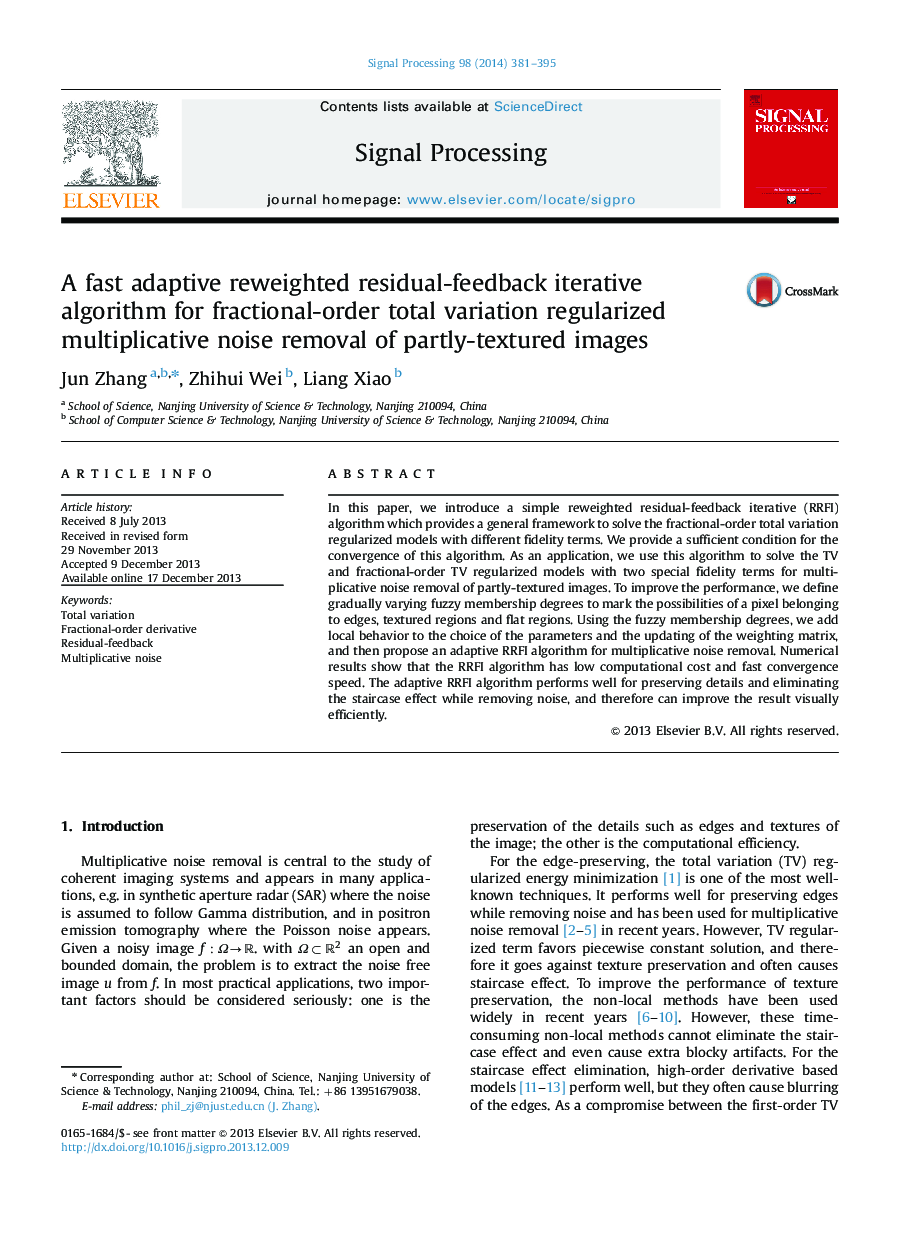| کد مقاله | کد نشریه | سال انتشار | مقاله انگلیسی | نسخه تمام متن |
|---|---|---|---|---|
| 563921 | 1451969 | 2014 | 15 صفحه PDF | دانلود رایگان |
• The proposed algorithm can solve TV regularized models with complex fidelity terms.
• The convergence of the algorithm is proved.
• The parameters can be computed adaptively according to the region characters.
• The adaptive algorithm has low computational cost and fast convergence speed.
• The adaptive algorithm can preserve details and eliminate staircase effect efficiently.
In this paper, we introduce a simple reweighted residual-feedback iterative (RRFI) algorithm which provides a general framework to solve the fractional-order total variation regularized models with different fidelity terms. We provide a sufficient condition for the convergence of this algorithm. As an application, we use this algorithm to solve the TV and fractional-order TV regularized models with two special fidelity terms for multiplicative noise removal of partly-textured images. To improve the performance, we define gradually varying fuzzy membership degrees to mark the possibilities of a pixel belonging to edges, textured regions and flat regions. Using the fuzzy membership degrees, we add local behavior to the choice of the parameters and the updating of the weighting matrix, and then propose an adaptive RRFI algorithm for multiplicative noise removal. Numerical results show that the RRFI algorithm has low computational cost and fast convergence speed. The adaptive RRFI algorithm performs well for preserving details and eliminating the staircase effect while removing noise, and therefore can improve the result visually efficiently.
Figure optionsDownload as PowerPoint slide
Journal: Signal Processing - Volume 98, May 2014, Pages 381–395
